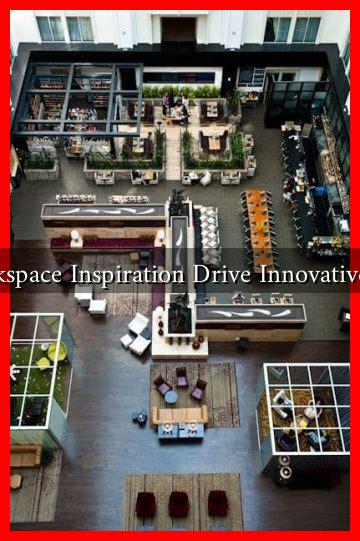-
Table of Contents
- Does Workspace Inspiration Drive Innovative Solutions?
- The Psychology of Workspace Design
- Key Elements of an Inspiring Workspace
- Case Studies: Companies Leading the Way
- The Role of Technology in Workspace Inspiration
- Statistics Supporting the Connection
- Conclusion: The Future of Workspaces and Innovation
Does Workspace Inspiration Drive Innovative Solutions?
In today’s fast-paced business environment, the quest for innovation is more critical than ever. Companies are constantly seeking ways to enhance creativity and problem-solving capabilities among their teams. One often-overlooked factor in this equation is the workspace itself. This article explores the relationship between workspace inspiration and innovative solutions, examining how the physical and psychological aspects of work environments can foster creativity.
The Psychology of Workspace Design
Workspace design is not merely about aesthetics; it significantly impacts employee behavior and productivity. Research indicates that the environment in which individuals work can influence their mood, motivation, and ultimately, their capacity for innovation. According to a study by the University of Exeter, well-designed workspaces can increase productivity by up to 15%.
Key Elements of an Inspiring Workspace
To understand how workspace inspiration drives innovative solutions, it is essential to identify the key elements that contribute to an inspiring environment. These include:
- Natural Light: Exposure to natural light has been shown to improve mood and energy levels, which can enhance creativity.
- Flexible Spaces: Areas that allow for collaboration, brainstorming, and relaxation can stimulate innovative thinking.
- Personalization: Allowing employees to personalize their workspaces can increase their emotional investment in their work.
- Biophilic Design: Incorporating elements of nature, such as plants and natural materials, can reduce stress and improve cognitive function.
Case Studies: Companies Leading the Way
Several companies have successfully harnessed the power of workspace design to drive innovation. Here are a few notable examples:
- Google: Known for its creative workspaces, Google incorporates open areas, relaxation zones, and even nap pods. This design philosophy encourages collaboration and creative thinking among employees.
- Airbnb: The company’s headquarters features a design that reflects its brand ethos, with communal spaces that foster interaction and creativity. The open layout encourages spontaneous brainstorming sessions.
- WeWork: As a co-working space provider, WeWork emphasizes flexible work environments that cater to diverse needs, promoting collaboration and innovation among various startups and freelancers.
The Role of Technology in Workspace Inspiration
Technology also plays a crucial role in enhancing workspace inspiration. Tools that facilitate communication and collaboration can significantly impact innovative outcomes. For instance:
- Virtual Reality (VR): Companies are using VR to create immersive environments for brainstorming and problem-solving sessions.
- Collaboration Software: Platforms like Slack and Microsoft Teams enable seamless communication, allowing teams to share ideas and feedback in real-time.
- Smart Office Solutions: IoT devices can optimize workspace conditions, such as lighting and temperature, to create an environment conducive to creativity.
Statistics Supporting the Connection
Several studies highlight the correlation between workspace design and innovation:
- A survey by Steelcase found that 89% of employees believe that their workspace impacts their ability to think creatively.
- According to a report by Gensler, companies that invest in workplace design see a 20% increase in employee satisfaction and a 10% increase in productivity.
Conclusion: The Future of Workspaces and Innovation
As businesses continue to navigate the complexities of the modern workplace, the importance of workspace inspiration cannot be overstated. An inspiring workspace not only enhances employee satisfaction but also drives innovative solutions that can set a company apart in a competitive landscape. By investing in thoughtful design, incorporating technology, and fostering a culture of collaboration, organizations can unlock the full potential of their teams.
In summary, the relationship between workspace inspiration and innovative solutions is clear. Companies that prioritize creating inspiring environments are likely to see significant returns in creativity, productivity, and overall employee engagement. As we move forward, the challenge will be to continually adapt and innovate our workspaces to meet the evolving needs of the workforce.
For further reading on the impact of workspace design on productivity, you can explore resources from Steelcase.

